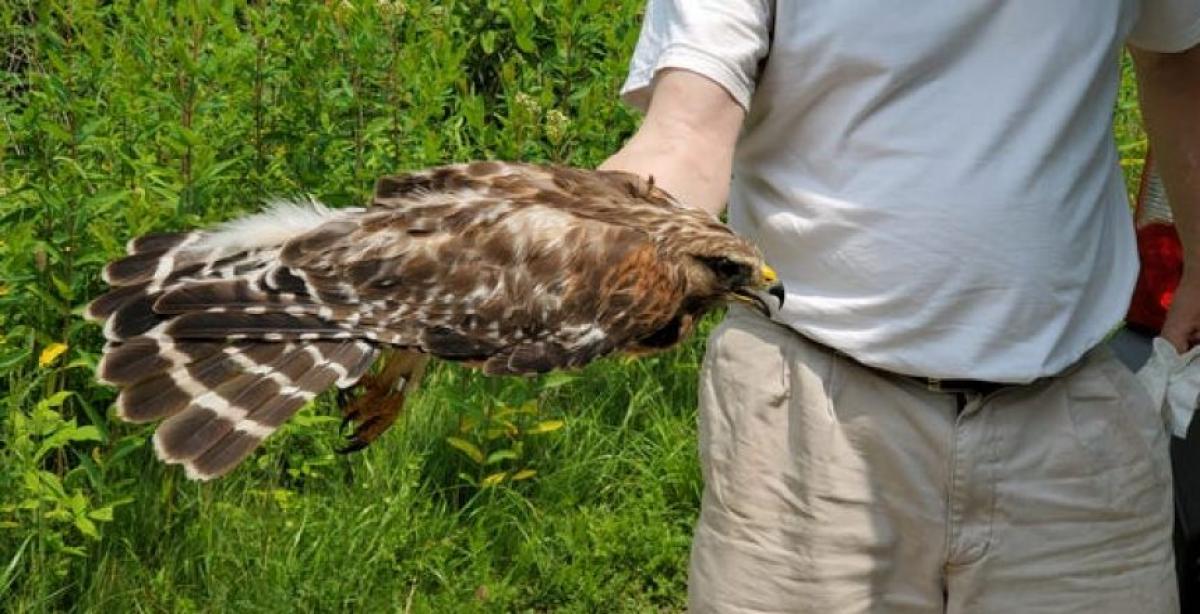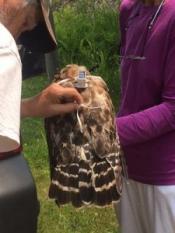Rare find: State-threatened hawk found nesting at Woodland Dunes in Two Rivers

Article and photographs by Nancy Nabak, Communication & Development Coordinator, Woodland Dunes Nature Center and Preserve.
The state-threatened Red-shouldered hawk has been nesting at Woodland Dunes for more than 20 years.
Until recently, staff had never been able to locate a nest. Experts call the birds “phantoms of the forest” for a reason, but because of the hawk’s behaviors and calling, they were known to be at Woodland Dunes.
Recently, interns at Woodland Dunes were planting trees in the preserve and noticed copious bird droppings surrounding a tree. This caused them to look up, and directly above them was the Red-shouldered hawk nest.
“There comes a time in every aspiring biologist’s life that leaves them speechless,” said Jordan Troeger, Woodland Dunes summer intern. “A moment where their heart races, their brain halts and the only thought they can formulate is ‘Wow.’ For me, it was finding the threatened Red-shouldered hawk nest.”
The interns have been planting trees in the 1,500-acre preserve to counter the die-off that will occur as a result of emerald ash borer.
Jen Klein, habitat manager for Woodland Dunes, has been spearheading a four-year project to get 10,000 trees in place to protect Woodland Dunes’ ridge and swale ecosystem.
“At the beginning of the summer, we challenged the interns to find the nest because we had been hearing the hawk calling all spring,” Klein said. “It’s incredible that one month later they actually did it.”
With that challenge, the interns set out to learn more about the Red-shouldered hawk.
They had been hearing a barred owl while they were working in the area that they discovered shares the same habitat with this type of hawk.
They also found signs such as feathers at the base of the tree.
To top it off, when they found the nest, they also saw a chick staring back at them.
Jim Knickelbine, executive director of Woodland Dunes, called in Red-shouldered hawk expert John Jacobs. Jacobs captured the female hawk, banded her and fitted her with a GPS device so her movements could be tracked.
Troeger said: “She was the most gorgeous bird I’d ever seen. I couldn’t stop staring at her. Her sleek, strong body was brown and white, her feet and beak bright yellow. Her shoulders, named oh so well, were a stunning shade of orangey-red. Her eyes were fierce and wise; she was unlike anything I’d witnessed before.”
Troeger also said this experience has made her more aware of her contributions to the decline of Red-shouldered hawk and other wildlife populations.
Logging, wetland-filling and collisions are some of the greatest human-induced threats facing Red-shouldered hawks today.
Woodland Dunes is proud to be a safe home for this state-threatened species.



